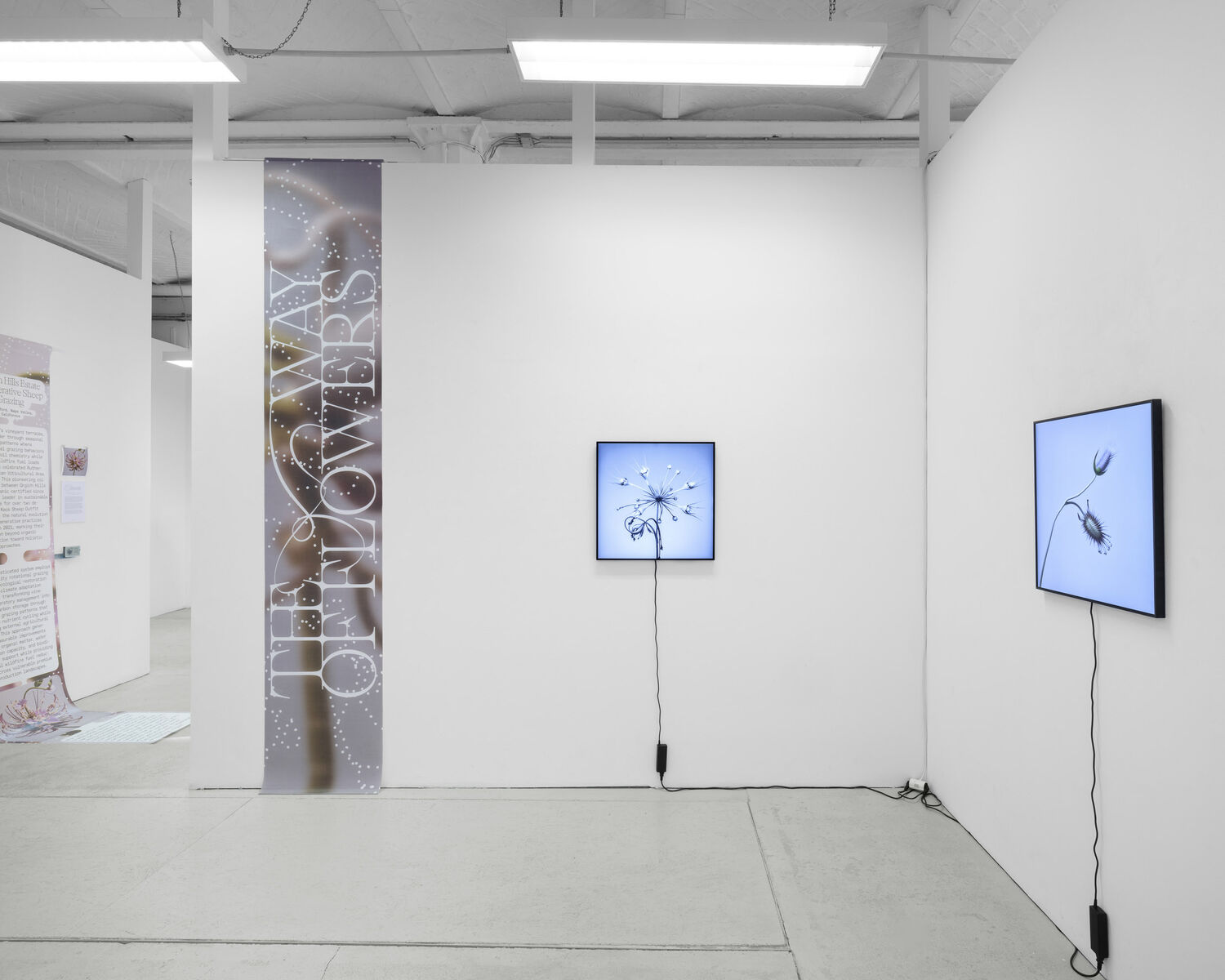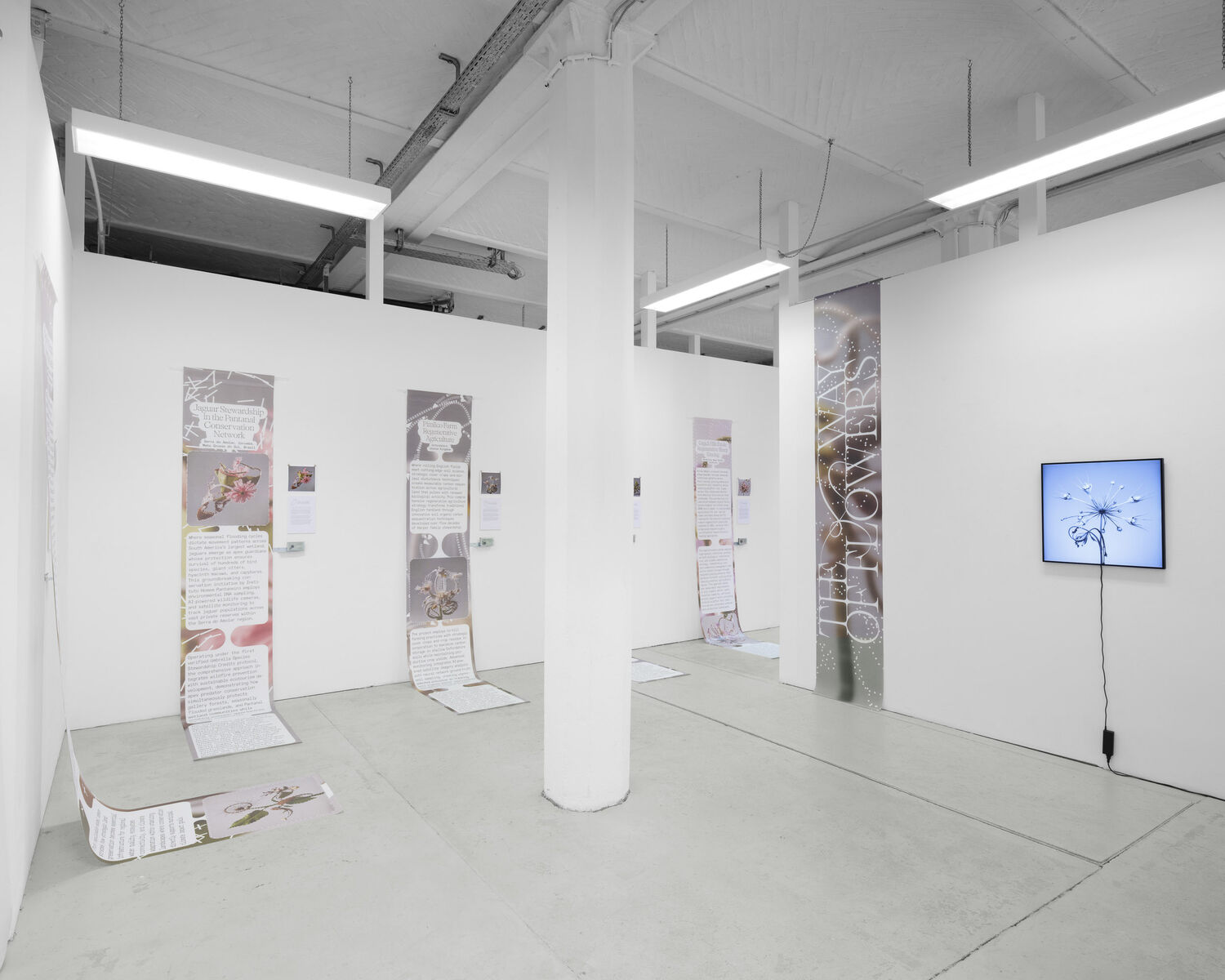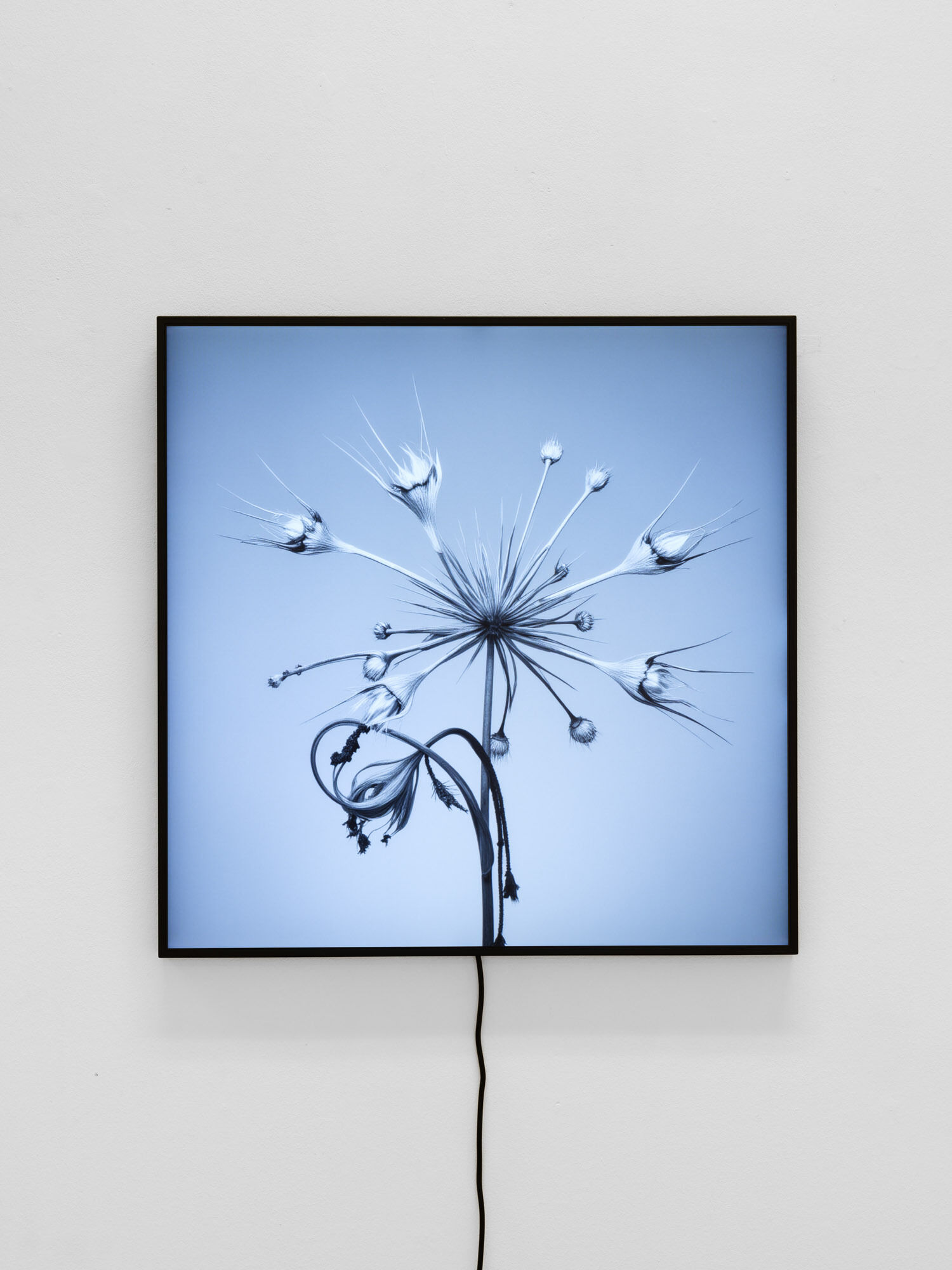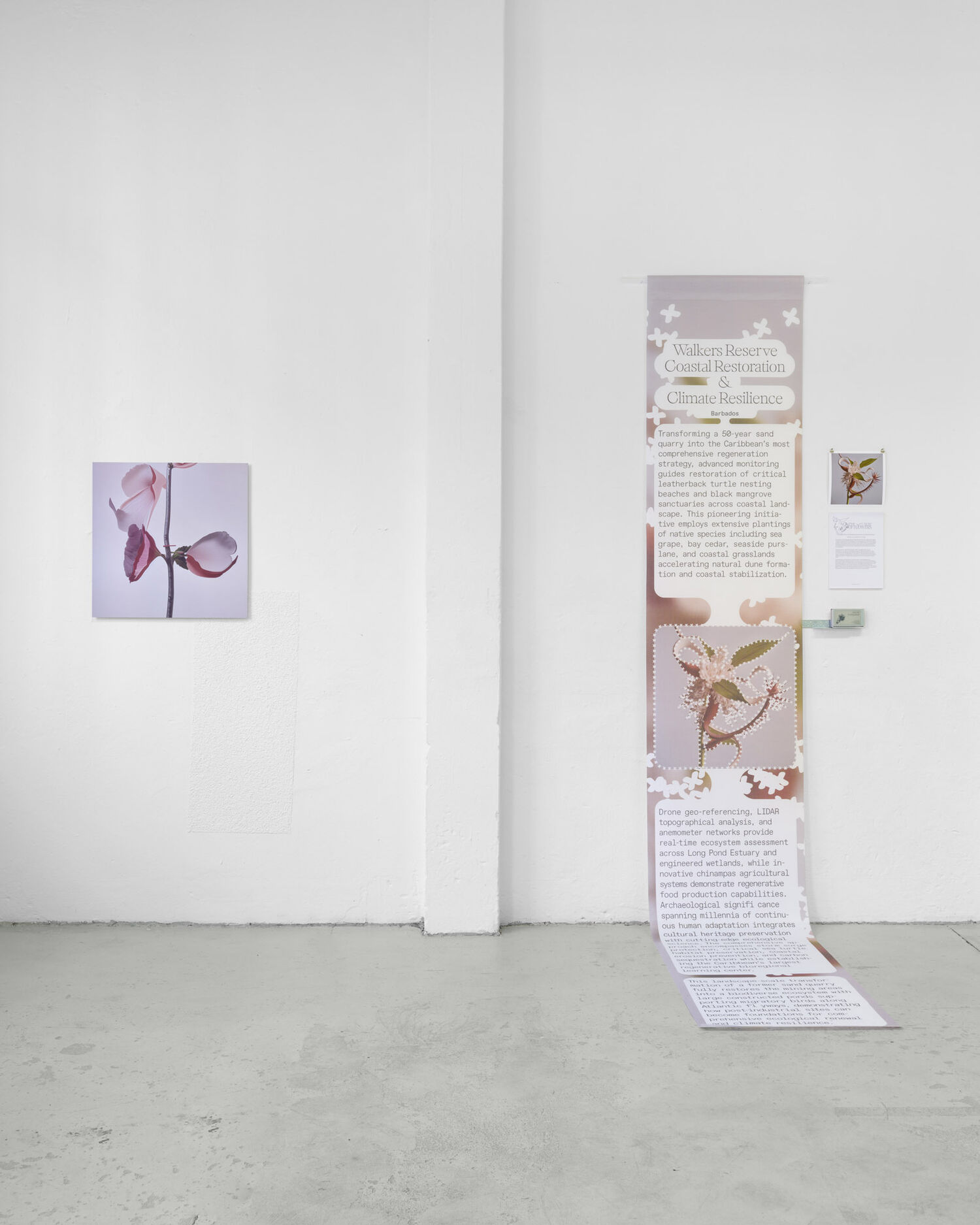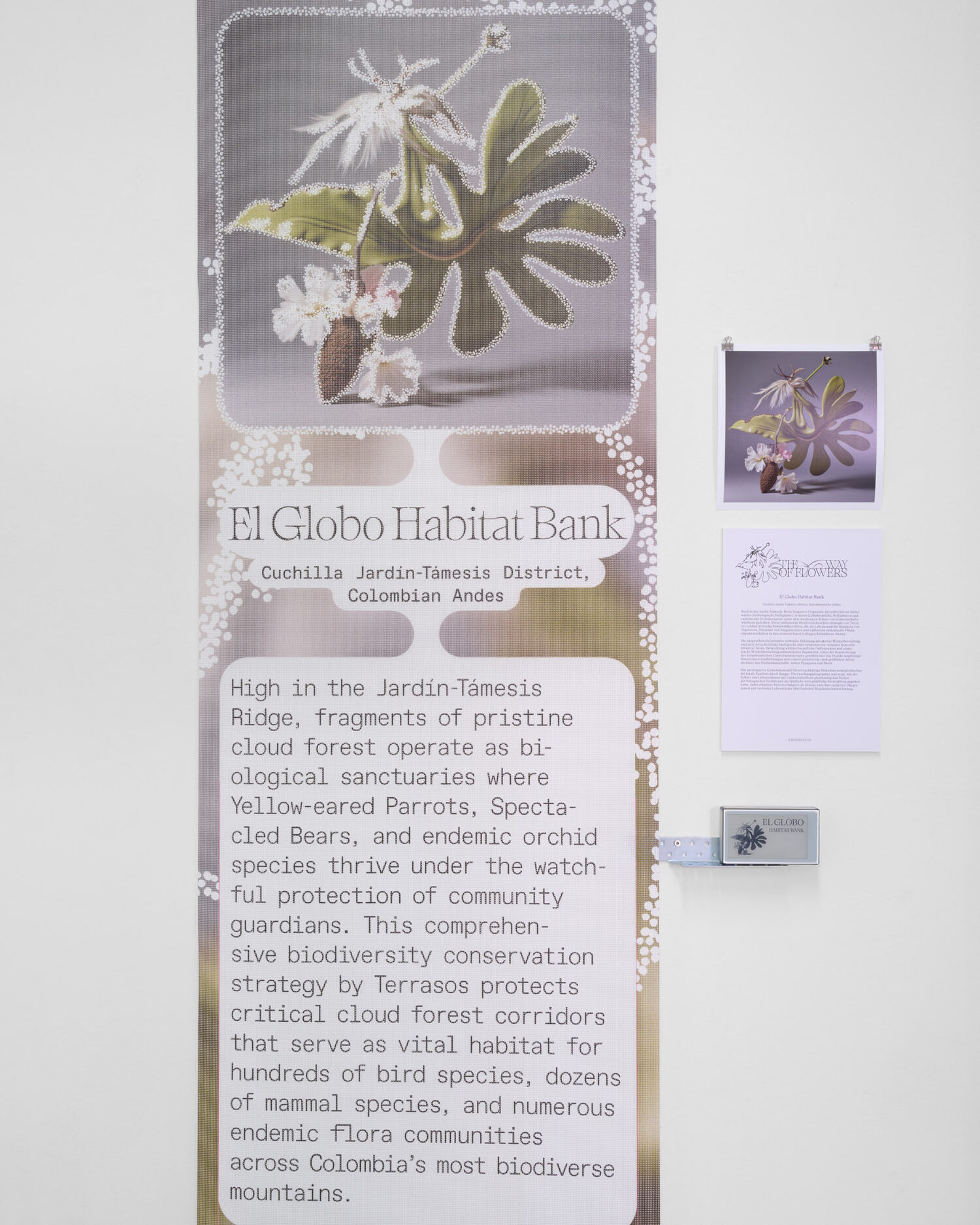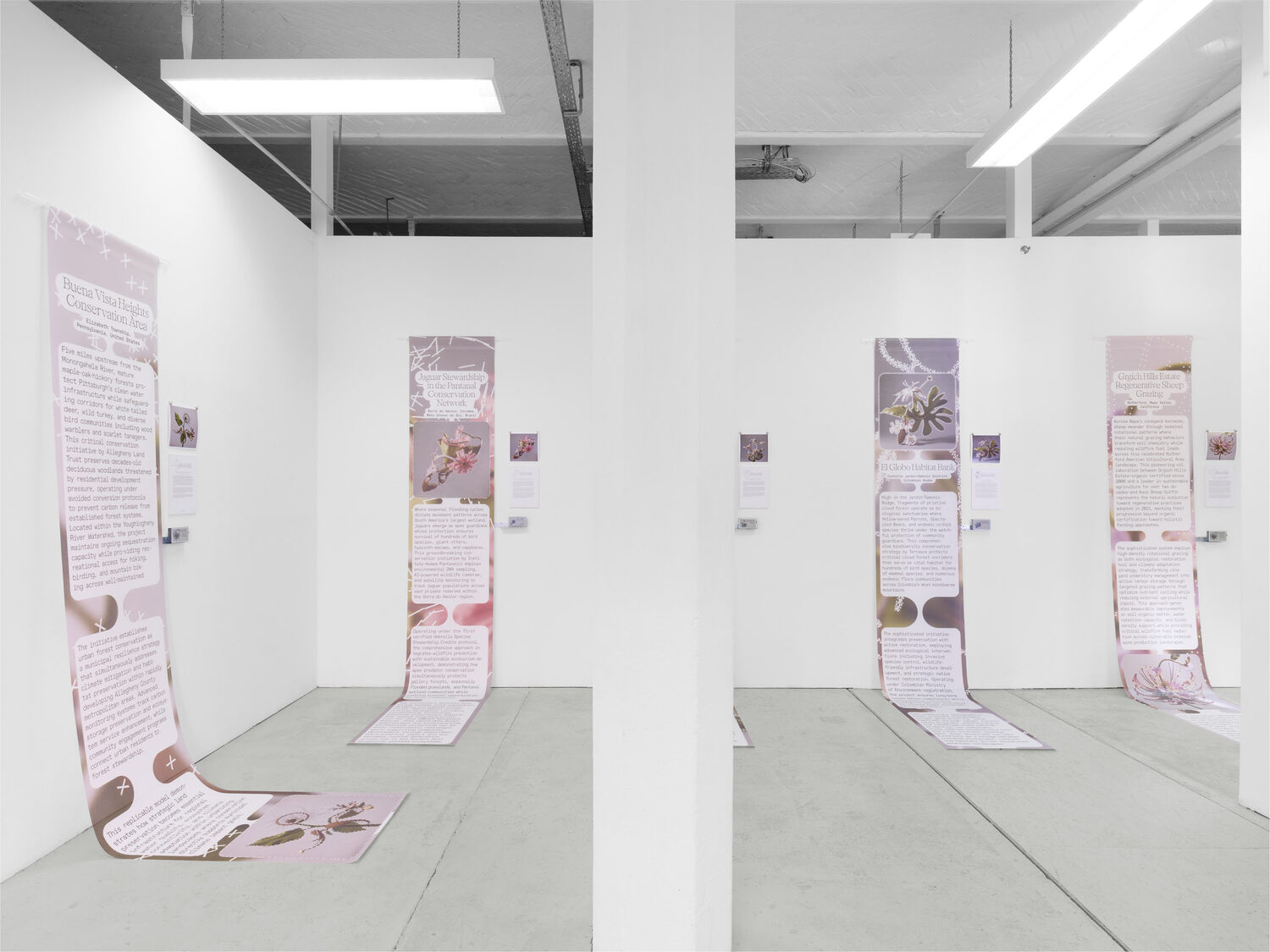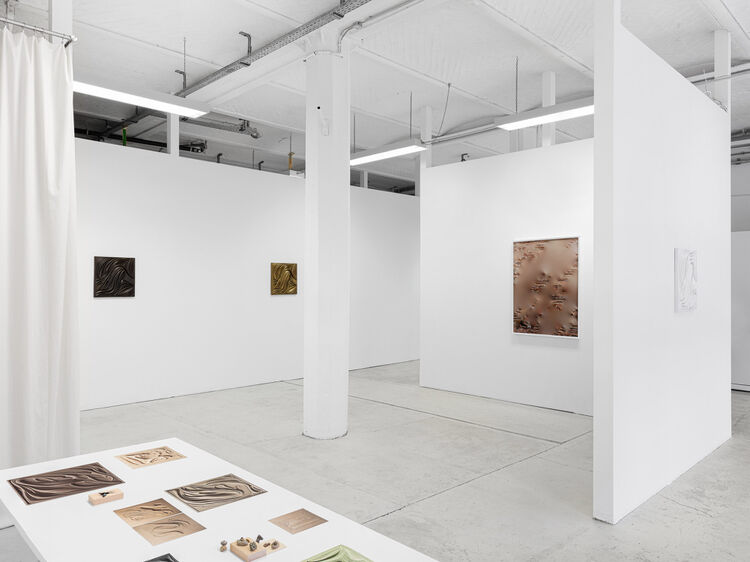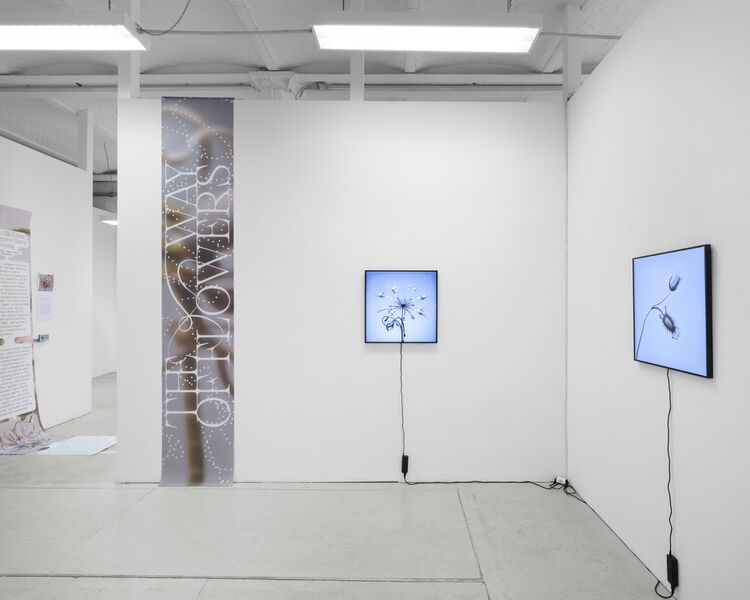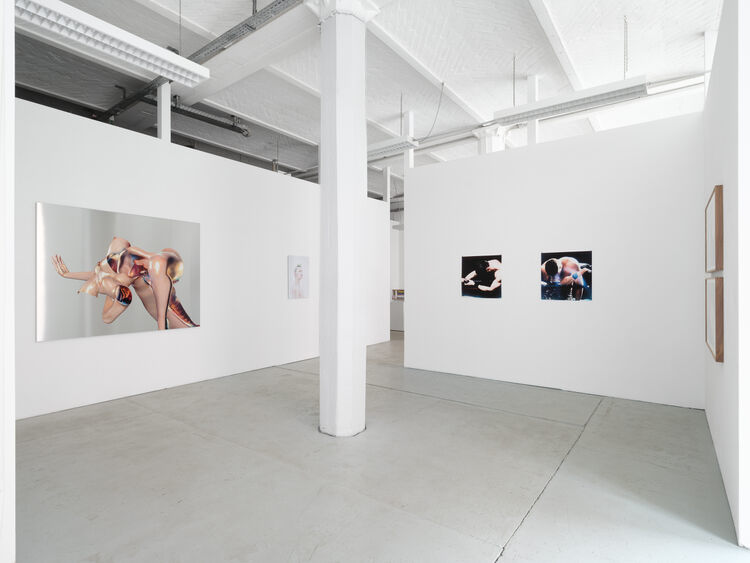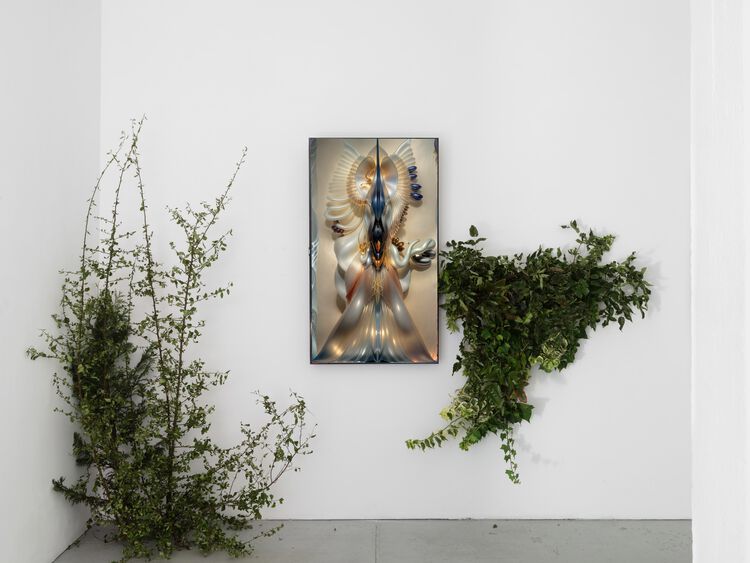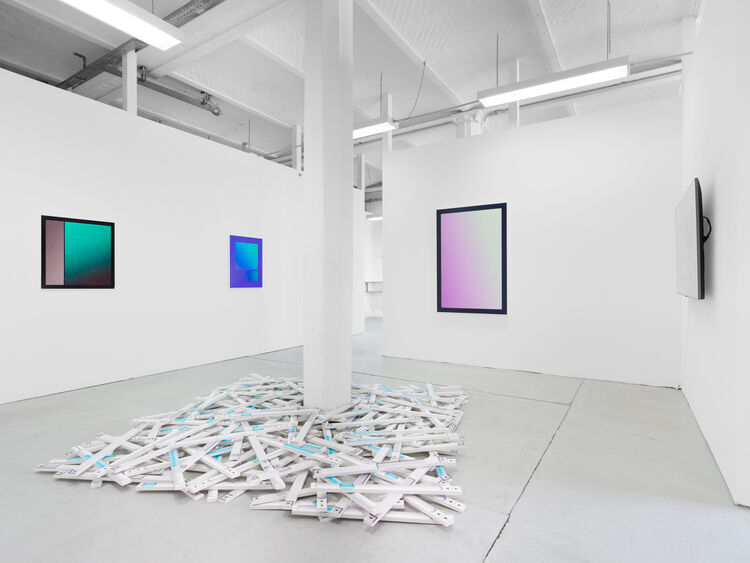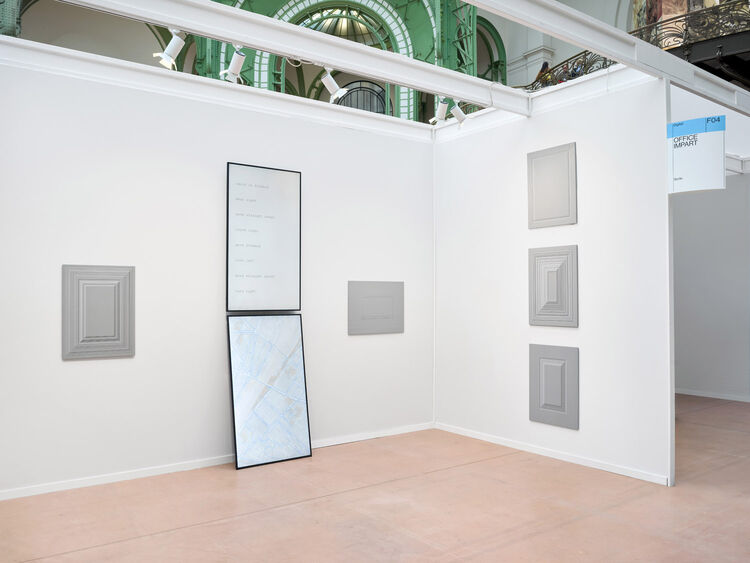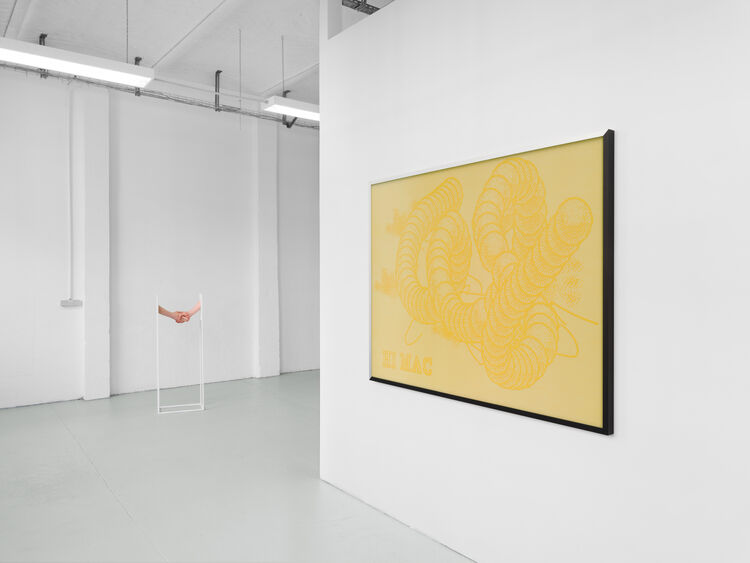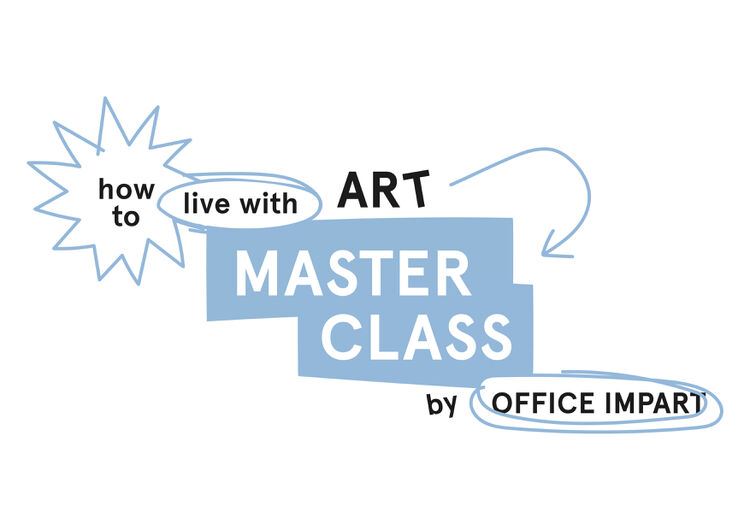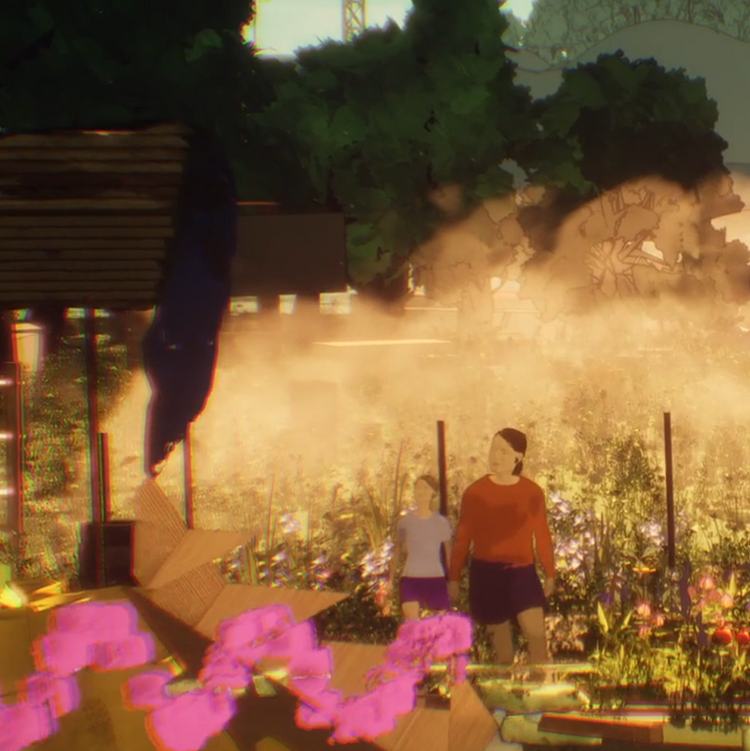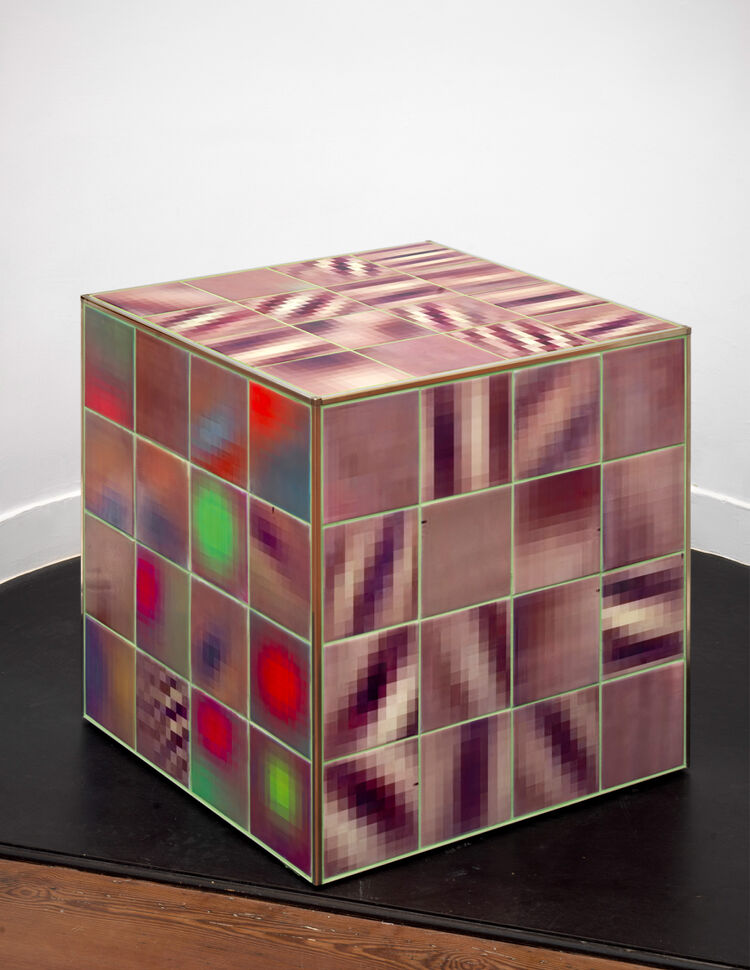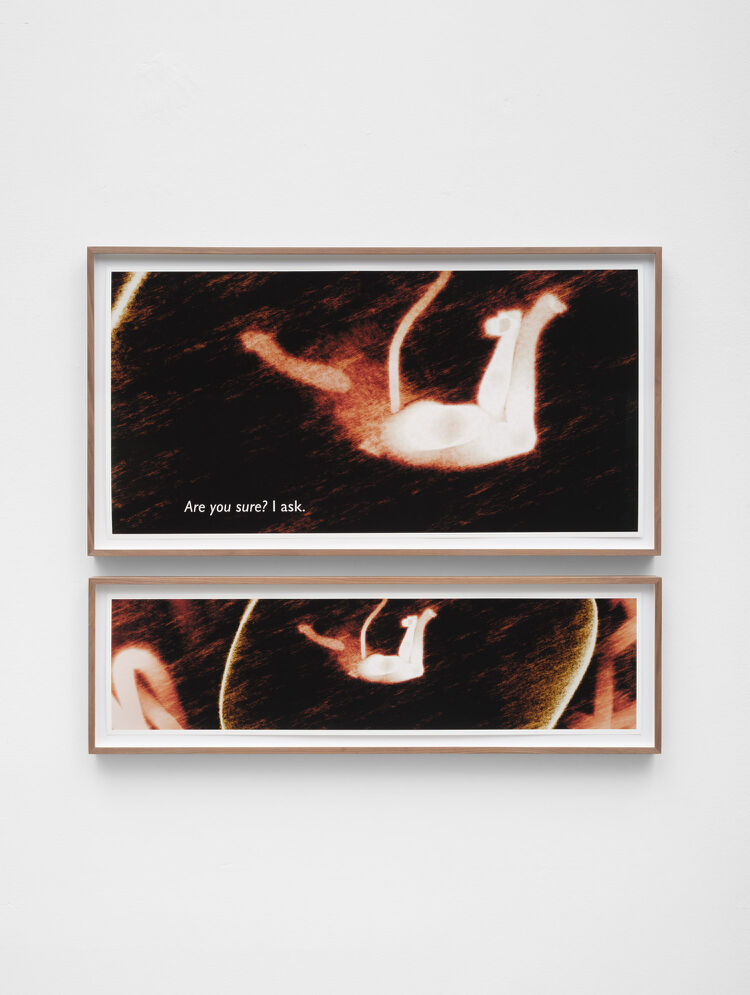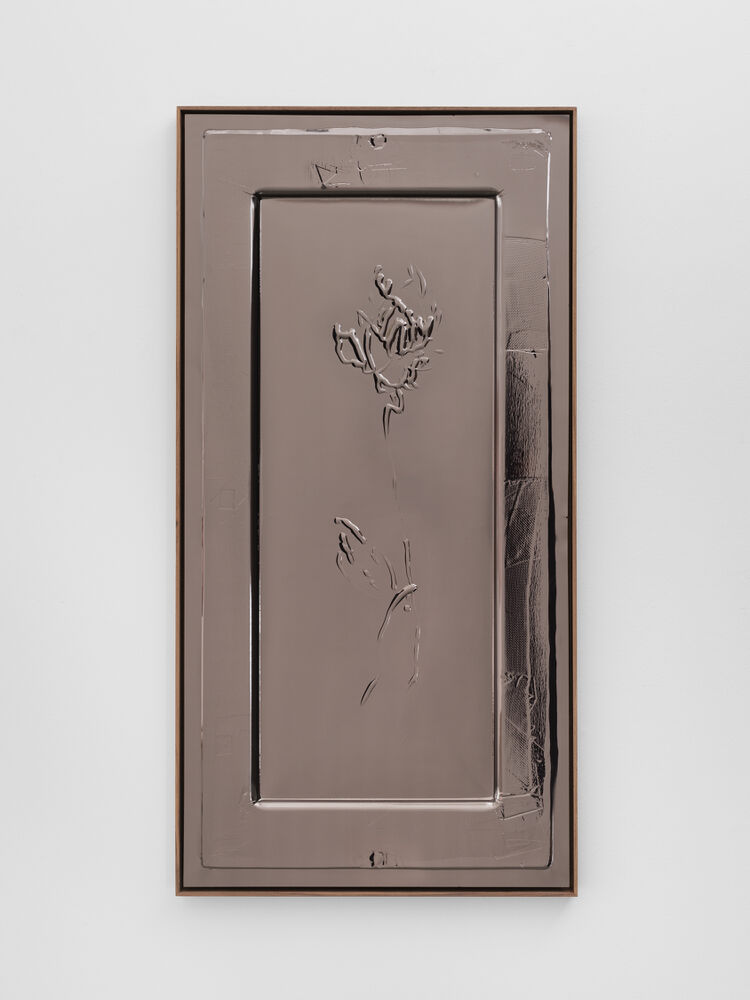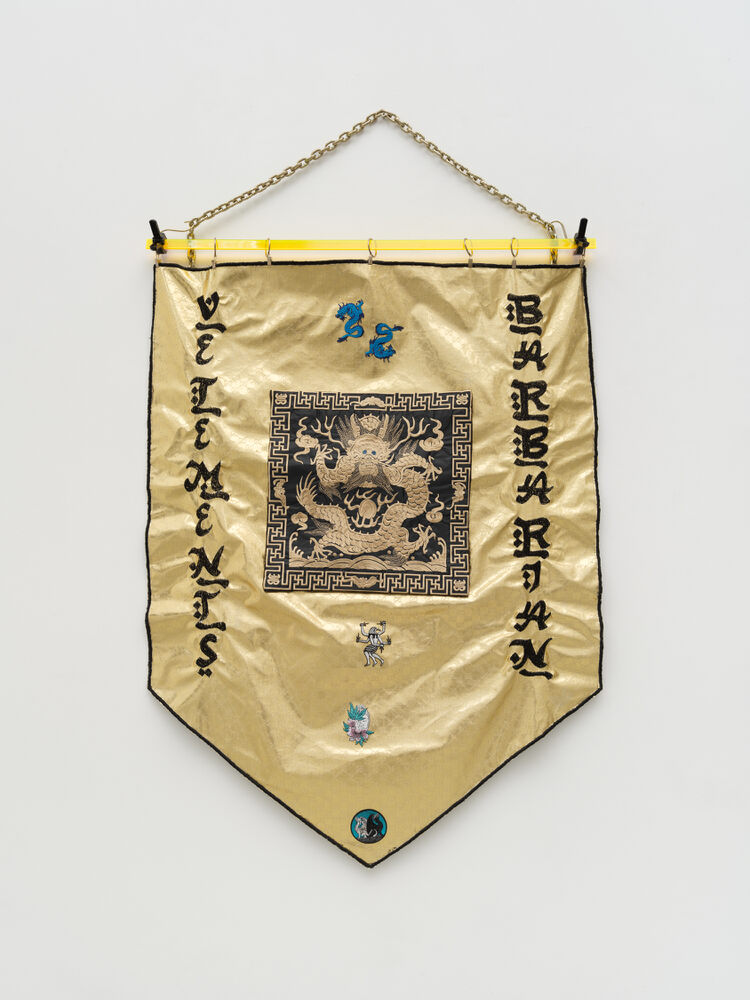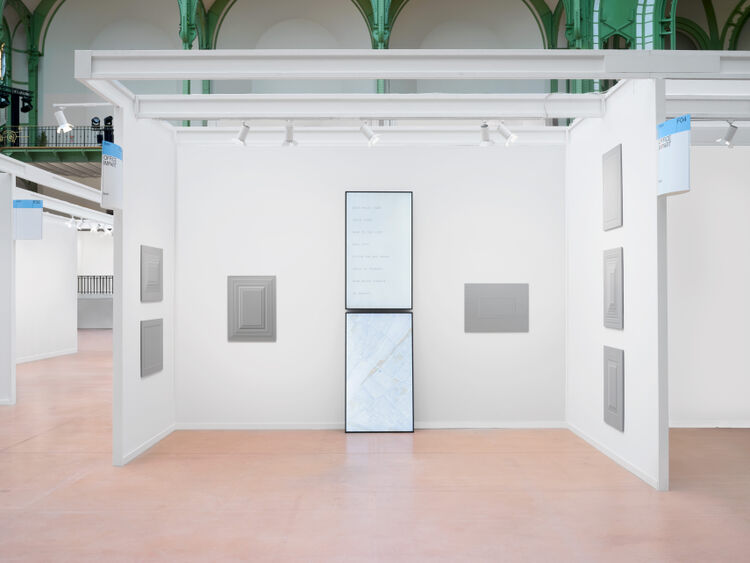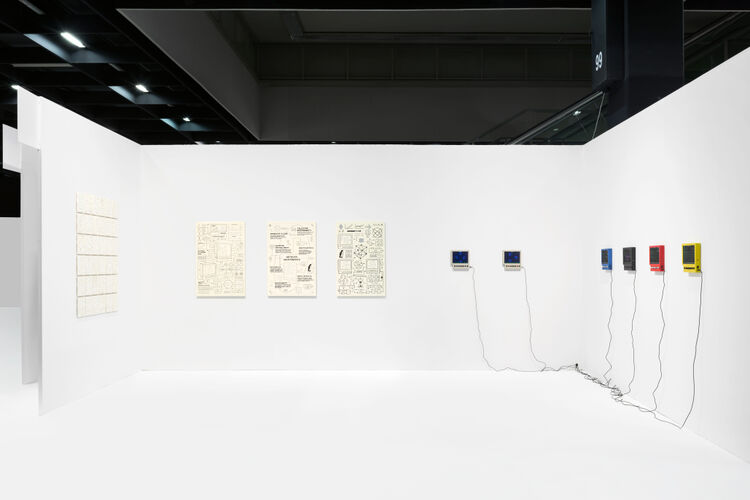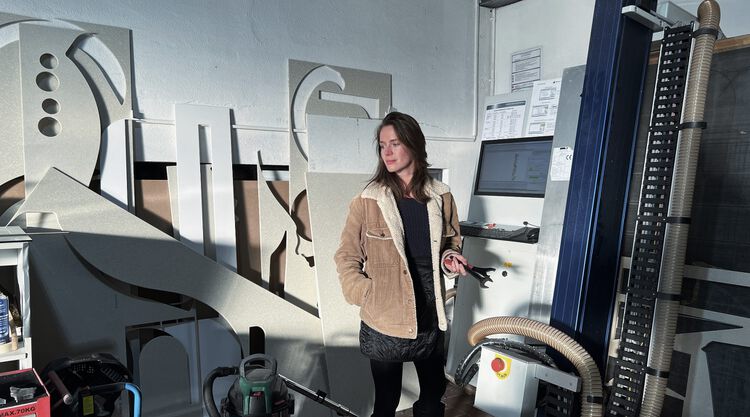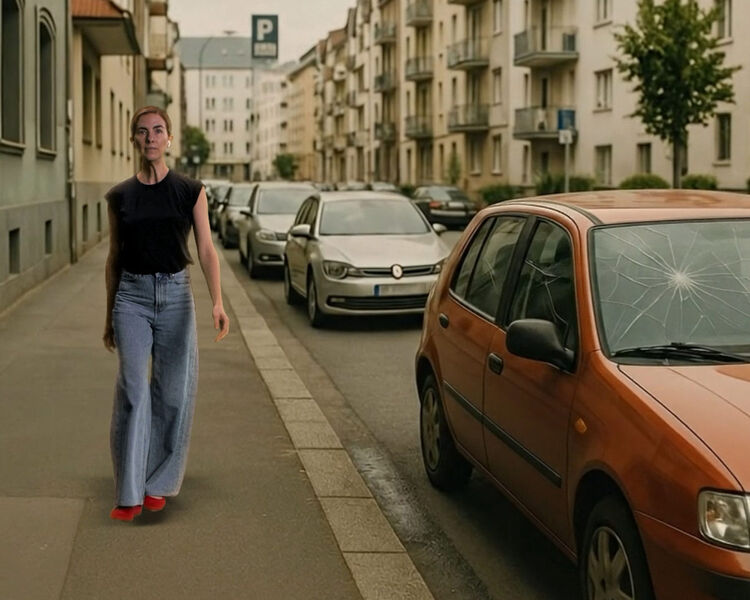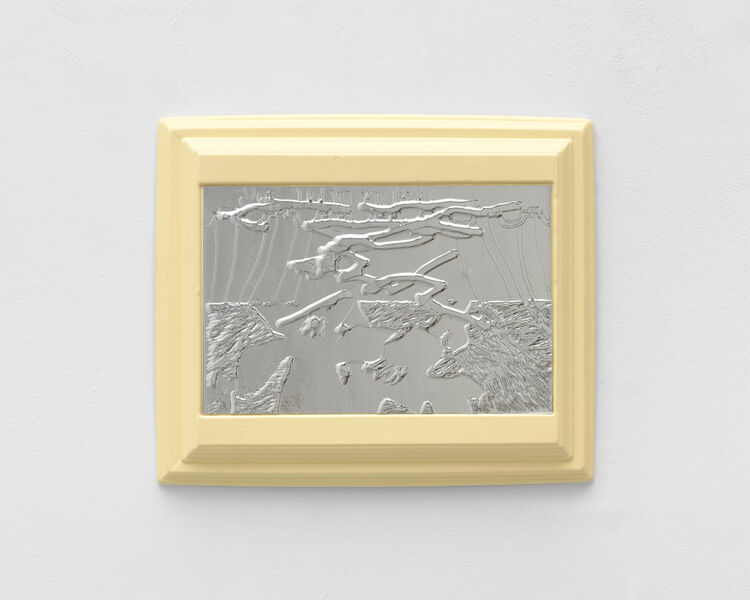CROSSLUCID - The Way of Flowers
CROSSLUCID
The Way of Flowers
04.09. – 17.10.2025
Opening times
Wed – Fri 3 – 6 pm
Special Event:
Artist Tour – 14.09.2025. – 5–9 pm
RSVP here
We are the soil for what comes next
by Chen Qiufan
As a kid, I fever-dreamed too often. I wasn't in my bed but underground, dark, warm, damp, my limbs unraveling into a long, tangle of strings growing through a tunnel made of humming light. I could taste the hum of the cartoons with my fingers; it tasted like putting your tongue on a sour battery.
CROSSLUCID had made my dream literal—or perhaps I never woke. The Way of Flowers sprawls before me like a hallucination of late capitalism finally eating its own tail, birthing something beautiful and monstrous: a garden where generative code photosynthesizes and collective devotion blossoms into literal biomes.
The “seeds” pulse with impossible life—neither plant nor code, but a fusion that renders the distinction obsolete. Watch: a participant in Tokyo dedicates their support to protect jaguars in Brazil. Instantly, the botanical on screen convulses. Tendrils erupt. Leaves shift from emerald to jade. Aerial roots descend like synaptic connections seeking soil that exists only as verified biodiversity outcomes. The Morphological Art Engine doesn't simulate growth; it channels it from a parallel dimension where our conservation actions have already crystallized as matter.
In this fevered ecology, Marder's “vegetal thinking” becomes protocol. The botanicals think without brains, remember without neurons, evolve without DNA—unless you count the seed ecosystems each steward selects. This is a living code woven from six distinct bioregions, more complex than any double helix, entangling California vineyard mycorrhizae with Barbadian mangrove pneumatophores in impossible anatomies. Cloud forests cross-pollinate with English hedgerows through blockchain consensus. Geography collapses. Time and collective action becomes a nutrient.
The gallery mutates into a temporal greenhouse, an exchange where biomes are traded as data. Six miniature ecosystems exist as both physical dioramas and data portals. Step close to the Colombian cloud forest and you can almost feel the life-force of their collective will, each project just like a flowing mirror, reflecting intuitively what evolution might bring to the botanical as well as different scales of information mutating on the underlying protocols, forms and processes. Visitors tap NFC chips, and they don't just observe; they ingest the system. Their contributions trigger cascades: somewhere, an actual seed is planted; here, a digital root plunges deeper; everywhere, the boundary between “real” and “virtual” ecological conservation dissolves like dew on a silicon leaf.
Two screens display primal seed ecosystems, the mother-code for this cryptobotanical genesis. Watch long enough and you see they are not merely objects but ongoing accumulations. They carry what CROSSLUCID calls “token memory”—not just a ledger, but scars, growth rings, evolutionary trauma and ecstasy encoded in their perpetually shifting forms. Monica Gagliano proved plants remember. The seed steward never holds a permanent artwork but rather host the potential for actions that are the only ones that become permanence, as the effort of reflecting carves the paths of memorizing everything: every contribution, every saved hectare, every ghost of a species that might have been.
I’m reminded of the electronic waste villages I've documented in Waste Tide, where circuit boards bloom with actual fungi. But here, the flow reverses: digital abstraction becomes ecological abundance. The blockchain, so often miscast as a cold ledger, is here repurposed to circulate regenerative imagination of our shared future. The system sweats the proof of on-the-ground regeneration.
This is creation as spellcraft, contribution as invocation. The “community members” are not mere participants; they are co-creators in this new ecology. They are nurturing futures—not financial instruments, but the bright green future where their grandchildren might breathe clean air. This gallery becomes a séance parlor where we commune with forests that don't yet exist but are already growing, their roots reaching backward through time to sprout from our present actions.
Yet, in the lucid moments, the vertigo is absolute. We are witnessing capital’s final, most elegant metamorphosis. Is this its ultimate act of capture, assimilating the wild logics of nature into a perfect, self-healing recursion? Or is it the moment the machine develops a soul, a conscience forged from code and chlorophyll? Every snapshot of evolutionary memory captures the acts of care and regeneration done by humans connected to land. Every morphological transformation maps to a genuine conservation victory. Beauty and biology collapse into a single phenomenon that our languages are not yet equipped to describe.
Perhaps this linguistic failure is the point. The botanicals speak a pidgin of plant chemistry and smart contracts, of photosynthesis and cryptography. They grow in the liminal space between the Amazon rainforest and the digital cloud, their rhizomes spreading through both soil and servers. They are teaching us a new language—or helping us remember an old one, from before we fractured the world into natural and artificial, living and inert.
Standing in this archive of impossible gardens, watching pixels bloom into actual forests, I feel the electromagnetic pulse of conservation data triggering morphological cascades. The future tastes green and electric on my tongue. The Anthropocene ends not with a bang, but with this: humans becoming the soil of digital flowers that fever-dream our shared, symbiotic worlds into being.
Listen to the Essay by Chen Qiufan, read by Penny Oxi Peng
Chen Qiufan (a.k.a. Stanley Chan) is an award-winning Chinese speculative fiction author, translator, curator and futurist. He is now an assistant professor at the School of Art & Social Sciences of Hong Kong Metropolitan University. He focuses on issues of climate change and the environment, artificial and natural intelligence and cybernetic society, and reflecting on how to incorporate ancient Chinese philosophies into the narrative framework for constructing a future symbiotic society. His works include the debut novel Waste Tide and AI 2041: Ten Visions for Our Future (co-authored with Dr. Kai-Fu Lee).
CROSSLUCID is an artist collective formed in 2018 that engages in highly collaborative cross-disciplinary projects in co-evolution with technology. Their work has been exhibited at institutions such as HEK Basel (CH), Belvedere 21(AUT), MuseumsQuartier Vienna (AUT), The Osaka Museum of Fine Arts (JPN), KRUPA Art Foundation (PL), and Chronus Art Center Shanghai (CHN). They are currently developing a new artwork in collaboration with RadicalXChange and Serpentine Arts Technologies.
Their work has been commissioned by the Berggruen Institute (US), Serpentine Arts Technologies (UK), LAS Art Foundation (DE), Google Arts & Culture, NOWNESS, MetaMedia (CN) and others and published internationally.
all photos: Marjorie Brunet Plaza
